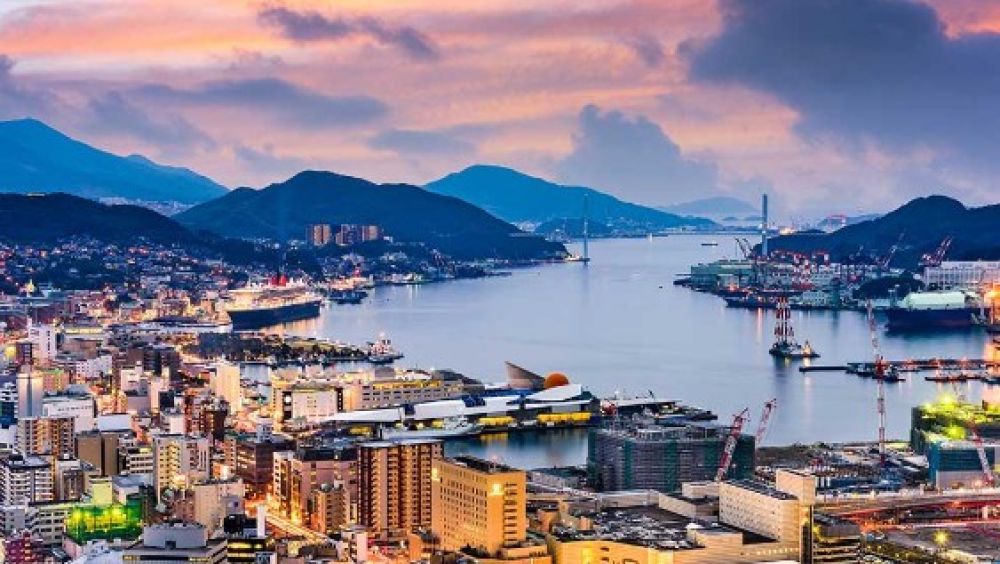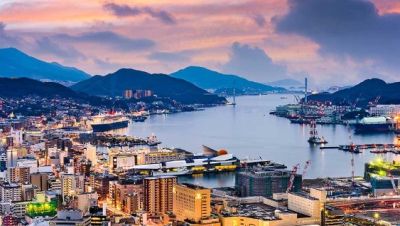

The Nagasaki Peace Park is a somber yet serene place that commemorates the atomic bombing of Nagasaki on August 9, 1945. The park features a collection of memorials, including the symbolic Peace Statue created by sculptor Seibo Kitamura, representing Nagasaki's wish for peace. Visitors can also explore the nearby Nagasaki Atomic Bomb Museum that provides a detailed, often emotional, account of the bombing and its aftereffects. The museum presents a range of artifacts from the fateful day, including personal belongings of the victims. This tour offers an essential understanding of wartime history and a compelling message of peace.
Glover Garden is an open-air museum that offers a glimpse into the history of Nagasaki's foreign settlement. It is set on a hill with a spectacular view of Nagasaki harbor. The garden showcases several Western-style residences, including the famous Glover House, which belonged to Scottish merchant Thomas Glover. As visitors wander through the gardens and homes, they will learn about the influence of foreign traders in Japan during the late 19th century. The site also sheds light on the early days of Japan's industrialization, with links to famous figures such as Sakamoto Ryoma.
Dejima was a Dutch trading post during Japan's period of national isolation and has been carefully restored to its Edo-period glory. Visitors can walk through the recreation of this fan-shaped artificial island that once served as a solitary conduit for western knowledge into Japan. A tour of Dejima allows tourists to see reconstructed residences and warehouses, learn about the daily lives of the Dutch residents, and understand the impact of European culture on Japan. Interactive exhibits and authentic reconstructions make this a vivid historical experience.
Ranked as one of the three best night views in Japan, the scenery from Mount Inasa is something visitors won't want to miss while in Nagasaki. A cable car or a drive can bring you up to the 333-meter high summit where a panoramic view of Nagasaki's city lights awaits. The observation platform provides 360-degree unimpeded vistas that are especially stunning after dusk. The tour to Mount Inasa is a memorable way to experience Nagasaki's beautiful landscape merging with the urban sprawl below.
Dedicated to documenting the atomic bombing of Nagasaki, this museum presents photographs, artifacts, and personal accounts that capture the devastating impact of the explosion. The exhibition is a powerful reminder of the consequences of nuclear warfare, aiming to educate visitors on the importance of peace. Just a short walk away is the Hypocenter Park, marking the ground zero of the explosion, with a black pillar standing as a stark monument surrounded by a tranquil park that encourages reflection on the events of that historic day.
Home to an adorable array of penguins, this aquarium is a family-friendly destination that offers interactive experiences such as penguin feeding and watching their spectacular underwater swimming techniques. If you're lucky, you might even catch sight of their nesting behavior or the care of baby penguins. The aquarium is dedicated to the preservation and study of various penguin species, inviting visitors to learn about these fascinating creatures in an intimate setting.
Nagasaki has a rich history of Christianity in Japan, and visiting the Our Lady of Nagasaki (Urakami Cathedral) along with the Twenty-Six Martyrs Museum is a way to explore this cultural heritage. The cathedral stands as a symbol of the resilience of Nagasaki's Christian community, having been rebuilt after its destruction during the atomic bombing. Nearby, the museum commemorates the 26 Christian martyrs who were executed in the city in 1597. The exhibits include artifacts, documents, and artwork that tell the story of Christianity's turbulent history in Japan.
The Meganebashi, or Spectacles Bridge, is an iconic stone arch bridge that dates back to the 17th century. Named for its reflection in the river that resembles spectacles, it is the oldest stone arch bridge in Japan. A stroll along the Nakashima River offers a peaceful experience and a chance to see several other historical bridges. This picturesque walk is recommended for those looking to enjoy some of the city's natural beauty blended with traditional architecture.
Nagasaki's Chinatown is the oldest in Japan and is an exciting place to explore Chinese heritage and culture. With its vibrant atmosphere, street food, and colorful festivals such as Chinese New Year and the Lantern Festival, visitors can enjoy a taste of China in Japan. Tourists can also try their hands at various cultural experiences like calligraphy, dumpling making, or simply savor authentic Chinese cuisine at one of the many restaurants that line the streets.
The Nagasaki Kunchi Festival is an explosive mix of culture, color, and tradition that takes place every year from October 7th to 9th. It features dance performances, floats, and dragon dances throughout the city, with roots tracing back over 370 years. Participants can expect to be immersed in a lively celebration that showcases a unique blend of Dutch, Chinese, and local influences. The festival is an ideal occasion for visitors to participate in and witness Nagasaki's local customs and community spirit in full force.
